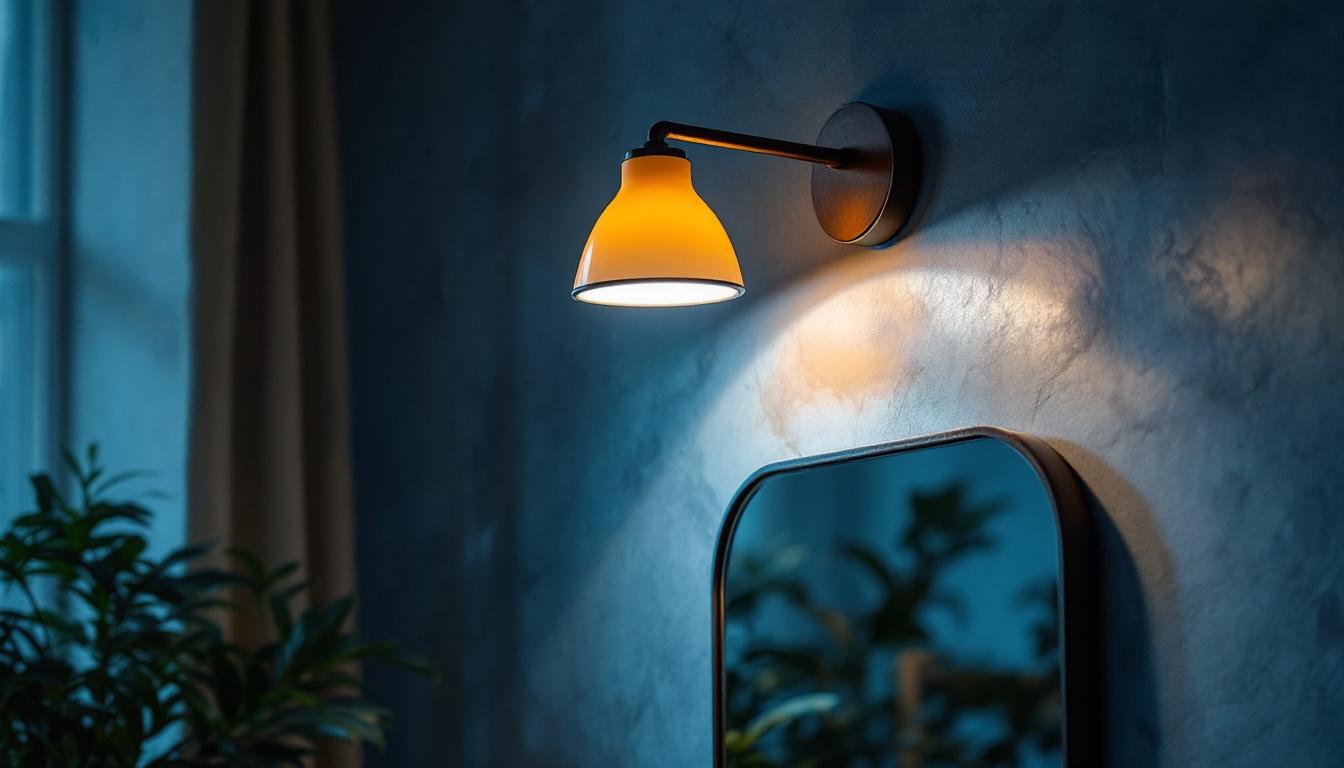
In the world of commercial spaces, office lighting plays a pivotal role in creating an environment that is both functional and aesthetically pleasing. For lighting contractors, understanding the nuances of office lighting is essential not just for design but also for ensuring energy efficiency and compliance with regulations. This article delves into the various aspects of office lighting, providing insights that can help lighting contractors enhance their expertise and deliver exceptional results to their clients.
Office lighting is not merely about illuminating a workspace; it significantly impacts productivity, employee well-being, and overall workplace satisfaction. Proper lighting can reduce eye strain, enhance focus, and create a welcoming atmosphere. As a lighting contractor, recognizing the implications of lighting design can help in crafting spaces that support both the functional and emotional needs of employees.
Research has consistently shown that well-designed lighting can boost productivity levels among employees. Bright, evenly distributed light can help maintain alertness and reduce fatigue. Conversely, poorly designed lighting can lead to distractions and discomfort, ultimately affecting performance. When planning office lighting, it’s crucial to consider the tasks performed in different areas and tailor the lighting accordingly. For instance, areas designated for collaborative work may benefit from softer, warmer lighting to foster a relaxed atmosphere, while spaces meant for focused tasks might require brighter, cooler light to enhance concentration and clarity.
Office lighting also plays a significant role in employees’ health. natural light exposure is linked to improved mood and reduced stress levels. Incorporating daylight harvesting techniques, such as using skylights or large windows, can enhance the overall work environment. Additionally, the right lighting can help regulate circadian rhythms, promoting better sleep patterns and overall well-being. Studies have shown that employees who work in environments with ample natural light report higher levels of job satisfaction and lower instances of absenteeism. Furthermore, using adjustable lighting systems that allow employees to control their workspace illumination can empower them, leading to a greater sense of ownership and comfort in their work environment.
With an increasing focus on sustainability, energy-efficient lighting solutions have become a priority for many organizations. As a lighting contractor, recommending LED fixtures and smart lighting controls can significantly reduce energy consumption and operational costs. Moreover, many clients are seeking to meet green building standards, making energy-efficient lighting an essential consideration in any office lighting project. The integration of smart technology, such as occupancy sensors and dimmers, not only conserves energy but also adapts to the dynamic needs of the workspace, ensuring that lights are only used when necessary. This approach not only benefits the environment but can also lead to substantial savings on energy bills, making it a win-win for both the organization and the planet.
Understanding the different types of office lighting is crucial for creating a well-balanced lighting scheme. Each type serves a unique purpose and can be combined to achieve the desired effect in an office environment.
Ambient lighting provides the general illumination needed for an office space. This type of lighting should be soft and evenly distributed to ensure that no areas are overly bright or dim. Common fixtures used for ambient lighting include ceiling-mounted lights, recessed lighting, and pendant fixtures. When selecting ambient lighting, it’s important to consider the color temperature, as warmer tones can create a cozy atmosphere, while cooler tones can enhance focus. Additionally, incorporating dimmable options can offer flexibility, allowing employees to adjust the brightness according to the time of day or specific tasks, further enhancing comfort and productivity.
Task lighting is essential for specific activities that require more focused illumination. This includes desk lamps, under-cabinet lighting, or adjustable fixtures that can be directed toward work surfaces. Task lighting should be bright enough to reduce eye strain but not so harsh that it causes glare. As a contractor, it’s vital to assess the specific tasks performed in different areas to recommend appropriate task lighting solutions. Furthermore, integrating LED technology can provide energy-efficient options that not only save on electricity costs but also offer longer lifespans compared to traditional bulbs, making them a smart investment for any office.
Accent lighting is used to highlight particular features within an office, such as artwork, architectural elements, or branding. This type of lighting adds visual interest and can enhance the overall aesthetic of the space. It’s often achieved through spotlights, wall sconces, or track lighting. When incorporating accent lighting, it’s important to ensure that it complements the ambient and task lighting without overwhelming the space. Additionally, using adjustable accent lights can allow for versatility in showcasing different elements, enabling the office to adapt to various events or themes, thereby creating a dynamic environment that reflects the company’s culture and values.
Designing an effective office lighting plan requires careful consideration of various factors, including layout, color schemes, and the specific needs of the occupants. A well-thought-out design can greatly enhance the functionality and ambiance of an office space.
The layout of an office directly influences how lighting is distributed. Open-plan offices may require a different approach compared to enclosed workspaces. In open areas, lighting should be designed to minimize shadows and ensure even illumination across shared spaces. Conversely, enclosed offices may benefit from adjustable task lighting to cater to individual preferences. Additionally, incorporating natural light into the design can significantly improve the overall atmosphere. Large windows or skylights can provide a connection to the outside world, promoting well-being and productivity among employees. Strategic placement of workstations near these sources of natural light can also reduce reliance on artificial lighting during daylight hours, contributing to energy efficiency.
Color temperature, measured in Kelvin (K), affects the mood and functionality of a workspace. Warmer temperatures (around 2700K-3000K) create a relaxed atmosphere, while cooler temperatures (4000K-5000K) promote alertness and focus. Additionally, the Color Rendering Index (CRI) measures how accurately colors appear under a light source. A high CRI (above 80) is essential in office settings to ensure that colors are perceived accurately, which can be particularly important in design-related fields. Furthermore, varying the color temperature throughout the day can mimic natural light patterns, helping to regulate circadian rhythms. By using tunable white lighting systems, offices can create dynamic environments that adjust to the time of day, enhancing both comfort and productivity.
Integrating control systems into office lighting can enhance flexibility and energy efficiency. Dimming systems, occupancy sensors, and daylight-responsive controls allow for adjustments based on the time of day and occupancy levels. As a contractor, recommending advanced control systems can help clients achieve their sustainability goals while providing a customizable lighting experience for employees. Moreover, integrating smart technology can enable remote control and monitoring of lighting systems, allowing for real-time adjustments and energy savings. This not only supports a greener office environment but also empowers employees to tailor their workspace to their preferences, fostering a sense of ownership and comfort that can lead to increased job satisfaction and performance.
Lighting contractors must stay informed about local codes and regulations governing office lighting. Compliance with standards not only ensures safety but also enhances the overall quality of the lighting design.
Building codes often dictate minimum lighting levels for various types of spaces. Familiarity with these codes is essential for ensuring that designs meet legal requirements. This includes understanding the necessary illumination levels for different tasks and spaces, as well as emergency lighting requirements.
Energy codes, such as those set by the International Energy Conservation Code (IECC), specify energy efficiency standards for lighting systems. These codes often require the use of energy-efficient fixtures and controls. Staying updated on energy codes can help contractors recommend solutions that not only comply with regulations but also appeal to clients looking to reduce their energy consumption.
Accessibility standards, such as the Americans with Disabilities Act (ADA), outline requirements for lighting in public spaces. Ensuring that lighting designs are compliant with accessibility standards is crucial for creating inclusive environments. This may include considerations for glare reduction, adequate illumination for pathways, and the placement of controls at accessible heights.
The world of office lighting is constantly evolving, with new trends emerging that reflect changes in work culture and technology. Staying informed about these trends can help lighting contractors provide innovative solutions to their clients.
Smart lighting technology is becoming increasingly popular in office environments. These systems allow for remote control and automation of lighting, enabling users to adjust settings based on their preferences or occupancy levels. As a contractor, recommending smart lighting solutions can enhance the user experience and provide clients with a modern, flexible lighting system.
Biophilic design emphasizes the connection between nature and the built environment. Incorporating natural elements, such as daylight and organic materials, into lighting design can create a more inviting and calming workspace. This trend is gaining traction as organizations recognize the benefits of fostering a connection to nature within their offices.
Human-centric lighting focuses on the needs of individuals, taking into account the impact of light on mood, health, and productivity. This approach often involves adjusting color temperature and intensity throughout the day to mimic natural light patterns. As a contractor, understanding human-centric lighting principles can help create spaces that enhance employee well-being and performance.
Office lighting is a multifaceted aspect of commercial design that requires careful consideration and expertise. For lighting contractors, understanding the various types of lighting, design considerations, compliance standards, and emerging trends is essential for delivering high-quality solutions. By prioritizing the needs of clients and their employees, contractors can create office environments that not only meet functional requirements but also enhance productivity and well-being.
As the demand for innovative and sustainable office lighting solutions continues to grow, staying informed and adaptable will be key to success in this dynamic field. Embracing the latest technologies and design principles will not only benefit clients but also position contractors as leaders in the industry.
Ready to elevate your office lighting designs with the best in spec-grade lighting products? Look no further than LumenWholesale, where we provide lighting contractors with exceptional quality at wholesale prices that can’t be beaten. Our extensive selection is designed to meet the highest industry standards, ensuring that every project shines with reliability and performance. Plus, with the convenience of free shipping on bulk orders, you can enjoy premium lighting solutions at the best value — all without hidden fees or compromises. Don’t miss out on the perfect blend of quality, affordability, and convenience. Discover the difference with LumenWholesale by visiting our collection today: Wholesale Lighting at the Best Value.

Discover the essential insights into industrial vanity lights with answers to lighting contractors’ most common questions.

Illuminate your understanding of outdoor lighting with this quick, 5-minute guide tailored for lighting contractors.

Discover how commercial LED bulbs are revolutionizing the lighting industry with energy efficiency, cost savings, and sustainability.

Discover how Christmas projector lights can illuminate new business opportunities for lighting contractors.